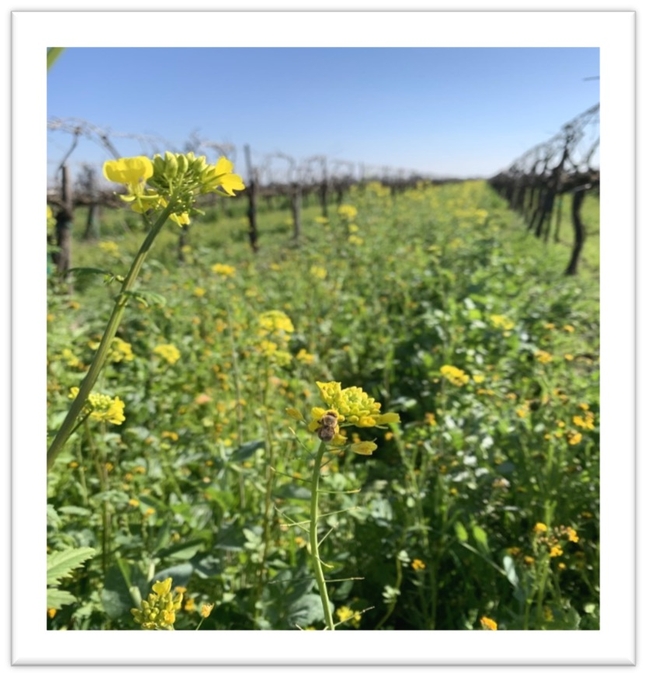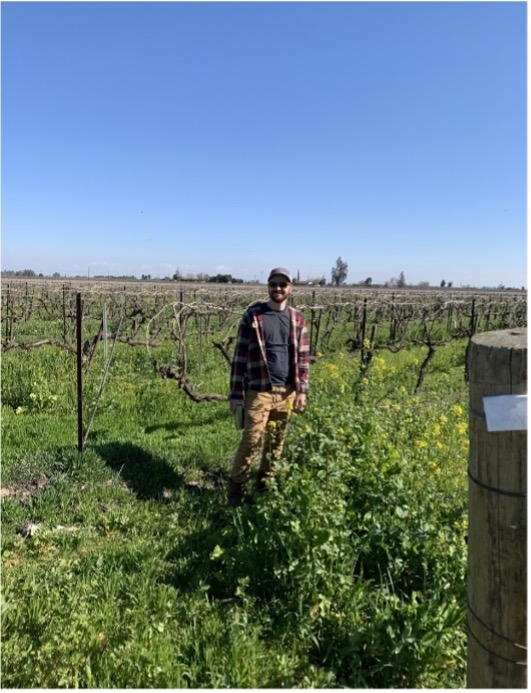Steven Cardoza farms 300 acres of organic raisin grapes with his father in Fresno County, California. He met with us recently to share his experiences with cover cropping and more broadly, his transition towards regenerative agriculture.
Steven remembers falling asleep as a kid on their tractor and following around his dad, who began farming before Steven was born, and has been certified organic for over 22 years. Steven joined the family business full-time six years ago and hasn't looked back.
Even though they were certified organic, they suffered from weed and pest pressure. Steven was introduced to the idea of ‘regenerative agriculture' and was intrigued, so he began learning as much as he could on his own. He estimates he has listened to thousands of hours of podcasts about agriculture while sitting on his tractor, and said it really came to life when he could see right in front of him what the podcasts were talking about.

Experience with cover crops
Cardoza made two significant changes from what his father had been doing. First, he began cover cropping every row instead of every other row, and second, he leaves the crop without mowing as long as possible, often as late as August. He has experimented with various cover crop seed mixes and blends, and continues to see what works best. “Nature does not like to be naked, and I want to keep living plants on the ground as much as possible”, says Cardoza.
Now that he cover crops all his vineyards, he has not seen a pest outbreak in the past two years. He also has not applied any nitrogen fertilizer at all, although sometimes he does use compost. He is most excited to experiment with cover crops' ability to suppress weeds, something that is a high priority for organic farmers with few herbicide options. Through trial and error, he is finding that barley has been reseeding along the berms of his rows and slowly outcompeting the Johnson grass. In some blocks, he has estimated a 98% reduction in Johnson grass in the past few years.
Through the CDFA Healthy Soils Demonstration Project program, he has received a grant in collaboration with the UC Coop extension in Fresno to experiment further with his cover crops. He is excited to try out a mower that ejects the mowed cover crops right onto the berms on each side of the row, further suppressing weeds near his vines.

A Central Valley question: But what about water use?
Most of Cardoza's vineyard blocks are drip-irrigated. This means that the cover crops, which are planted in between the rows of his vines, are not irrigated at all. He waits until the first rain in the fall/winter to plant. Some years are better than others, but he says he has always been happy with how they have grown. We were able to tour one block of vineyard that has the ability for flood irrigation. The cover crops were much taller, greener, and healthier looking than in the drip-irrigated sections. However, they have not been irrigated all winter; Cardoza does one post-harvest flood irrigation, plants his cover crops directly afterwards and lets them grow with only nature's inputs after that.
Advice for other growers?
“Get comfortable with being uncomfortable,” he says. He spends a lot of time thinking about and experimenting with his cover crops and other regenerative practices. He also says he's getting the local reputation of “the cover crop guy”, and other growers have called him with questions such as how to calibrate a drill seeder. He says the trend in some of the older generation of farmers was to closely guard your secrets to success from your neighbors and he'd like that to change. “I've spent a lot of time and effort to learn what I have, and I'm very happy to share it with other farmers who want to make similar changes”. When he sees another farmer successfully implementing regenerative practices, he knows it's not just benefiting their bottom line, but their land as well, and that makes him feel good.